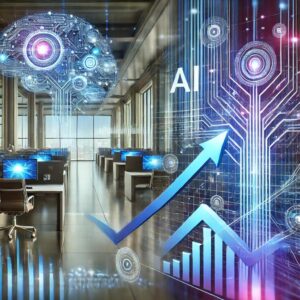Better AI Is a Matter of Timing
Artificial Intelligence (AI) is undergoing a transformative phase, driven by rapid advancements in technology and an increasing volume of data. However, the effectiveness of AI systems is not solely reliant on the algorithms or the amount of data they process. Timing plays a crucial role in not only the development of AI technologies but also in their implementation and effectiveness in real-world applications.
The Role of Timing in AI Development
Timing is a multifaceted aspect that encompasses various elements in the AI development lifecycle. From the onset, researchers and developers must recognize that the success of AI systems can be significantly influenced by external factors such as economic conditions, societal needs, and technological advancements.
For instance, the AI boom witnessed in recent years is a result of a confluence of factors—a surge in computational power, the availability of big data, and a growing acceptance of AI technologies across industries. However, had these factors emerged at different times in history, the development of AI could have progressed at a slower pace or led to different outcomes altogether.
The Importance of Data Availability
Data is the backbone of any AI system, and its availability is a critical factor in determining the timing of AI deployment. The explosion of digital data in recent years has provided researchers with vast amounts of information to train AI models. However, this wealth of data must be coupled with the right technology to leverage it effectively.
For example, companies that recognized the potential of big data early on were able to invest in AI technologies that could handle and analyze this information. This proactive approach has allowed them to gain a competitive advantage, while those who lagged behind in adopting AI have struggled to keep pace.
Societal Acceptance and Readiness
Another critical aspect of timing is societal readiness for AI technologies. The perception of AI’s capabilities and its impact on daily life can shape the deployment of these systems. For instance, the healthcare industry has seen a significant push toward integrating AI technologies in diagnostics and patient care. However, societal apprehensions regarding privacy and ethical implications can hinder the speed at which these technologies are adopted.
Companies and developers must not only create effective AI solutions but also engage with the public to address these concerns. Creating awareness and understanding of how AI can be beneficial can pave the way for smoother implementation and adoption.
The Impact of Economic Factors
Economic factors also play a pivotal role in the timing of AI initiatives. During times of economic prosperity, companies are more likely to invest in cutting-edge technologies, including AI. Conversely, during economic downturns, there may be a reluctance to invest in innovation.
Moreover, the availability of funding can greatly influence when and how AI technologies are developed. Startups often rely on venture capital to fuel their innovations; thus, favorable economic climates can lead to an influx of funding, accelerating the pace of AI advancements.
Strategies for Optimizing Timing in AI Deployment
Given the importance of timing in AI, organizations must adopt strategies that optimize the deployment and integration of AI technologies. Here are some effective strategies:
1. Staying Abreast of Technological Trends
Organizations should keep a close watch on emerging technologies and trends in AI. Regularly attending conferences, participating in workshops, and engaging with thought leaders in the field can provide valuable insights.
These efforts not only facilitate knowledge sharing but also help organizations anticipate technology shifts that can impact their AI strategies.
2. Conducting Market Research
Understanding market demands and societal trends is crucial for timing AI deployment. Organizations must conduct thorough market research to identify gaps in the market that can be addressed through AI solutions.
By aligning their offerings with current societal needs, organizations can position themselves for success.
3. Building Relationships with Stakeholders
Engaging with various stakeholders—customers, industry peers, and policymakers—can provide organizations with feedback on their AI initiatives. This engagement will help in building trust and addressing any concerns that may arise regarding AI deployment.
By fostering these relationships, organizations can better navigate the complexities of societal acceptance and enhance the timing of their AI rollouts.
4. Emphasizing Ethical AI Practices
As AI systems become more integrated into society, the importance of ethical practices cannot be overstated. Organizations that prioritize ethical considerations in their AI development and deployment will likely experience greater acceptance and support from the public.
This proactive approach can also mitigate potential backlash, ensuring that AI technologies are adopted smoothly and efficiently.
5. Adapting to Economic Changes
Organizations must remain agile and responsive to economic fluctuations. Developing a flexible business model that can adapt to changing economic conditions will ensure that AI initiatives can proceed smoothly, regardless of external pressures.
Being prepared for economic downturns, for example, can help organizations navigate funding challenges while still pursuing AI innovations.
Conclusion
In conclusion, timing is an essential but often overlooked factor in AI development and deployment. The interrelationship between technological advancements, data availability, societal acceptance, and economic factors highlights the complexities involved in optimizing AI initiatives.
By adopting proactive strategies to align their efforts with these factors, organizations can enhance the effectiveness of their AI systems while maximizing the timing of their deployment. As the AI landscape continues to evolve, staying attuned to these elements will be essential for success in this rapidly changing field.
Ultimately, recognizing that better AI is indeed a matter of timing will empower organizations to innovate responsibly and effectively, paving the way for a future where AI serves humanity’s best interests.



